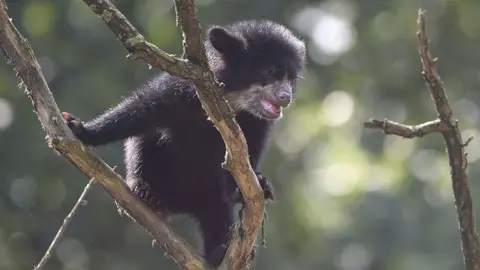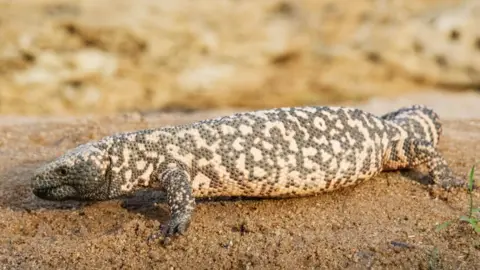Extinction: Meet the new poster animals of conservation
 Getty Images
Getty ImagesEver heard of the gnu goat, the red-eared guenon or the Gila monster?
They could be the future icons of conservation, according to a study. Scientists say these little-known animals are key to raising money for protecting vulnerable ecosystems.
The likes of tigers and elephants, which appeal to the masses, are often selected for fundraising campaigns.
But this approach has been criticised for neglecting many other species that need our help.
"It's time for us to put some science behind the species we use to market and fundraise for conservation - rather than framing our approach around what's popular or seen as 'cute' by the public," said Dr Hugh Possingham, chief scientist at conservation NGO, The Nature Conservancy.
 Getty Images
Getty ImagesTo test whether a more scientific approach could have wider benefits for vulnerable ecosystems, the researchers compiled data on protected areas, human impacts, and the ranges of thousands of animals.
They identified priority places for conservation in the world and suitable "flagship species" to fundraise for them.
"We can't afford to waste a single conservation dollar," said Dr Jennifer McGowan of Australia's Macquarie University.
"Given the state of the biodiversity crisis we need to be strategic, effective and efficient with the conservation work that we do."
Flagship species are a good way "to appeal to hearts and minds", she said, citing images from the recent wildfires in Australia showing injured koalas. "Millions of dollars were raised - because no-one can look at those pictures and not have their hearts break."
 Getty Images
Getty ImagesThe study, published in Nature Communications, compiled a list of hundreds of mammals, birds and reptiles that could act as new flagship species. They are charismatic in their own right, but often overlooked in favour of more iconic alternatives.
Animals highlighted include:
- The Andean bear from the Andean mountain forests
- The fossa, a cat-like predator from Madagascar
- The rhinoceros hornbill of south-east Asia
- The secretary bird of the East African savannahs
- The Gila monster, which lives in the deserts of Mexico and the US.
 Getty Images
Getty ImagesThe year 2020 is regarded as critical for nature, culminating in a meeting in Kunming, China, in October to define a new global framework for biodiversity.
Governments are meeting in Rome for the first time on Monday to work on a "Paris-style" United Nations agreement due to be finalised later in the year.
Last year an intergovernmental panel of scientists said one million animal and plant species are now threatened with extinction.
Recent estimates suggest the annual budget needed to meet global biodiversity goals amounts to at least $100bn per year.
Follow Helen on Twitter.
